What Is The Significance Of Animal Painting In Paleolithic Art
The Pregnant of Upper Paleolithic Art
The period beginning 40,000 years ago (the Upper Paleolithic) witnessed a marked increment in human artistic and symbolic expression. At most this time, a large number of statues carved from bone or stone begin to appear in the archaeological tape, as practise magnificent paintings of animals that were hunted and animals that were not, as well every bit other images on Cavern walls and ceilings. Information technology is difficult for modern viewers to remain unmoved by these images, simply what did these works mean to their creators and why did they create them?
Some researchers regard Paleolithic artwork equally part of a system of communication of ideas-a system that uses animals and geometric patterns every bit symbols, the specific significant of which may exist lost forever. Anthropologist One thousand thousand Conkey views the 1,200 bones engraved with abstruse geometric patterns at Altamira Cave, Kingdom of spain,every bit the identifying symbols-the "flags"-of dissimilar groups of people who came together at the cave during certain periods.Archaeologist Michael Joachim views the cave paintings of northern Kingdom of spain and southern France (the so-chosen Franco-Cantabrian region) as symbols marking territory. Social stresses that accompanied the population influx into the region during the catamenia beginning 25,000 years ago may have resulted in the need to mark territory with symbols of buying.Painting animals-probably the near important resources of a territory-within a sacred identify in the territory, similar a cavern, might take served to denote to intruders the rightful ownership of the surrounding lands. Archaeologist Clive Gamble views the modest stone statues of female figures,known equally Venus figurines, equally a symbolic social glue, helping to maintain social connections between geographically distant groups through a mutual religion and art fashion.
More recently, researchers Patricia Rice and Ann Paterson have returned to a more economic perspective. Their statistical assay of the numbers and kinds of animals seen on cave walls in the European Upper Paleolithic shows interesting correlations with the collections of creature remains found at habitation sites in Spain and France. Small-scale, non-aggressive animals such equally reindeer and cherry-red deer were important in the diet of the cave painters and seem to have been depicted on cave walls in proportion to their economic importance. In addition, animals whose remains are institute less ofttimes at archaeological sites, but that were impressive, dangerous, and produced large quantities of meat when they were successfully hunted,were commonly included in the artwork too. So it would appear that cave painters wanted to depict animals that were important food sources. Withal, the relatively recently discovered Chauvet Cave contradicts this blueprint, with its stunning depictions of animals non known to accept been exploited for food past Paleolithic Europeans, including carnivores similar lions, bears, and panthers, likewise every bit woolly rhinoceroses.
A neuron-psychological approach has been applied by researchers J. D. Lewis-Williams and T. A. Dowson to explain at least some of the less naturalistic cave art. They note that there are six bones geometric forms that people who are placed into an altered land of consciousness (for instance, through hypnosis) under experimental weather report seeing: dots, wavy lines, zigzags, cantankerous-hatching or grids, Concentric circles or U-shaped lines, and parallel lines. Interestingly, these geometric forms are precisely those seen in some ancient cave art dating to more than than thirty,000 years ago.
Lewis-Williams and Dowson's approach is cross-cultural-in other words, they surveyed a broad multifariousness of historical and archaeological cultures, finding mutual images in artwork all over the world. Lewis-Williams and Dowson signal out ethnographic records of shamans (priests) who, in an attempt to communicate with spirits or meet into other worlds, autumn into a trance like land by fasting, dancing, hyperventilating, going into isolation in absolute darkness, undergoing sleep impecuniousness, or even ingesting natural hallucinogens.When these shamans produce an artistic representation of what they have seen in their trances, they oftentimes include geometric shapes that are also seen in Upper Paleolithic artwork. These images from trances are not culturally controlled but result, in function, from the structure of the optic system itself and are therefore universal.Perhaps through sleep impecuniousness, staring at a flickering fire or the ingestion of drugs, ancient shamans or priests produced these images in their own optic systems. They then translated these images to cave walls as part of religious rituals.
1.The period beginning xl,000 years agone (the Upper Paleolithic) witnessed a marked increment in homo artistic and symbolic expression. At nigh this time, a big number of statues carved from bone or stone begin to announced in the archaeological record, as practice magnificent paintings of animals that were hunted and animals that were not, as well as other images on Cave walls and ceilings. It is difficult for modern viewers to remain unmoved by these images, but what did these works mean to their creators and why did they create them?
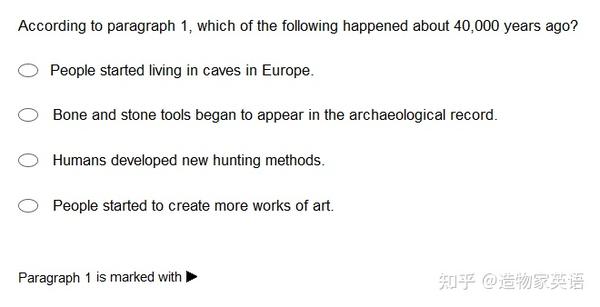
ii.Some researchers regard Paleolithic artwork every bit part of a arrangement of advice of ideas-a organization that uses animals and geometric patterns every bit symbols, the specific meaning of which may exist lost forever. Anthropologist Million Conkey views the 1,200 basic engraved with abstract geometric patterns at Altamira Cave, Espana,every bit the identifying symbols-the "flags"-of different groups of people who came together at the cave during certain periods.Archaeologist Michael Joachim views the cavern paintings of northern Spain and southern France (the so-called Franco-Cantabrian region) equally symbols marking territory. Social stresses that accompanied the population influx into the region during the period kickoff 25,000 years agone may take resulted in the demand to mark territory with symbols of buying.Painting animals-probably the about important resources of a territory-inside a sacred place in the territory, like a cavern, might have served to announce to intruders the rightful ownership of the surrounding lands. Archeologist Clive Chance views the small stone statues of female figures,known as Venus figurines, as a symbolic social glue, helping to maintain social connections betwixt geographically afar groups through a common religion and art style.

3.Some researchers regard Paleolithic artwork as office of a arrangement of advice of ideas-a arrangement that uses animals and geometric patterns as symbols, the specific meaning of which may be lost forever. Anthropologist Meg Conkey views the 1,200 bones engraved with abstract geometric patterns at Altamira Cave, Espana,as the identifying symbols-the "flags"-of different groups of people who came together at the cavern during sure periods.Archaeologist Michael Joachim views the cave paintings of northern Spain and southern France (the so-chosen Franco-Cantabrian region) every bit symbols mark territory. Social stresses that accompanied the population influx into the region during the period get-go 25,000 years ago may take resulted in the need to marker territory with symbols of buying.Painting animals-probably the almost important resources of a territory-within a sacred place in the territory, like a cave, might have served to denote to intruders the rightful ownership of the surrounding lands. Archaeologist Clive Gamble views the modest stone statues of female figures,known as Venus figurines, equally a symbolic social glue, helping to maintain social connections between geographically distant groups through a common religion and fine art style.
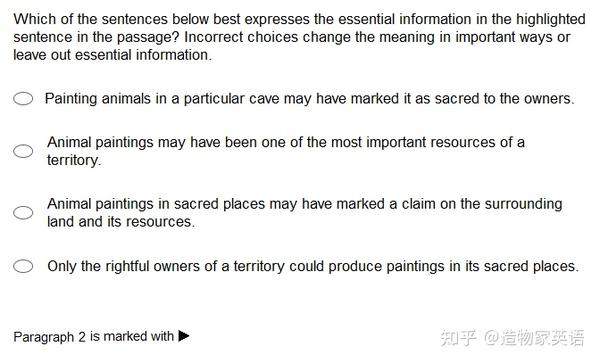
4.Some researchers regard Paleolithic artwork as part of a organisation of advice of ideas-a organisation that uses animals and geometric patterns as symbols, the specific significant of which may exist lost forever. Anthropologist Million Conkey views the 1,200 bones engraved with abstruse geometric patterns at Altamira Cave, Espana,as the identifying symbols-the "flags"-of different groups of people who came together at the cave during certain periods.Archeologist Michael Joachim views the cave paintings of northern Spain and southern France (the so-called Franco-Cantabrian region) as symbols marking territory. Social stresses that accompanied the population influx into the region during the period beginning 25,000 years ago may have resulted in the demand to marker territory with symbols of buying.Painting animals-probably the almost important resources of a territory-within a sacred place in the territory, like a cavern, might have served to announce to intruders the rightful buying of the surrounding lands. Archaeologist Clive Gamble views the small stone statues of female figures,known as Venus figurines, as a symbolic social glue, helping to maintain social connections between geographically distant groups through a common religion and art style.
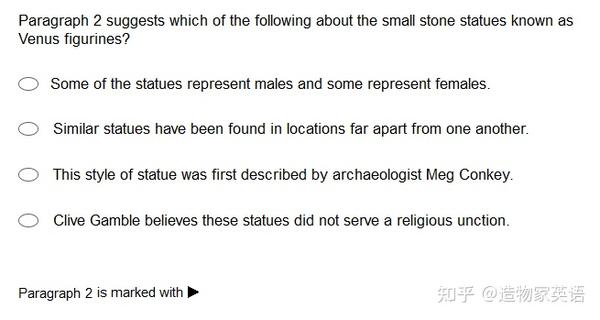
5.More recently, researchers Patricia Rice and Ann Paterson have returned to a more economic perspective. Their statistical assay of the numbers and kinds of animals seen on cave walls in the European Upper Paleolithic shows interesting correlations with the collections of animal remains found at habitation sites in Espana and France. Pocket-size, non-ambitious animals such equally reindeer and cerise deer were important in the nutrition of the cave painters and seem to have been depicted on cavern walls in proportion to their economic importance. In add-on, animals whose remains are establish less often at archaeological sites, but that were impressive, dangerous, and produced big quantities of meat when they were successfully hunted,were unremarkably included in the artwork as well. So it would announced that cavern painters wanted to depict animals that were important food sources. However, the relatively recently discovered Chauvet Cave contradicts this pattern, with its stunning depictions of animals not known to have been exploited for food past Paleolithic Europeans, including carnivores like lions, bears, and panthers, as well as woolly rhinoceroses.

6.More recently, researchers Patricia Rice and Ann Paterson have returned to a more than economic perspective. Their statistical analysis of the numbers and kinds of animals seen on cave walls in the European Upper Paleolithic shows interesting correlations with the collections of beast remains found at abode sites in Spain and French republic. Modest, non-aggressive animals such equally reindeer and ruby-red deer were important in the diet of the cavern painters and seem to accept been depicted on cave walls in proportion to their economic importance. In addition, animals whose remains are found less oft at archaeological sites, but that were impressive, unsafe, and produced large quantities of meat when they were successfully hunted,were unremarkably included in the artwork as well. And then it would appear that cave painters wanted to depict animals that were important food sources. However, the relatively recently discovered Chauvet Cave contradicts this pattern, with its stunning depictions of animals not known to have been exploited for nutrient by Paleolithic Europeans, including carnivores like lions, bears, and panthers, likewise as woolly rhinoceroses.
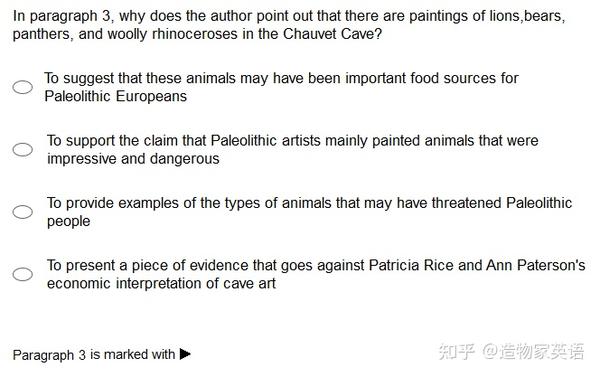
vii.A neuron-psychological approach has been applied by researchers J. D. Lewis-Williams and T. A. Dowson to explain at least some of the less naturalistic cave art. They annotation that there are six basic geometric forms that people who are placed into an altered state of consciousness (for example, through hypnosis) under experimental conditions report seeing: dots, wavy lines, zigzags, cantankerous-hatching or grids, Concentric circles or U-shaped lines, and parallel lines. Interestingly, these geometric forms are precisely those seen in some ancient cavern art dating to more than than 30,000 years agone.
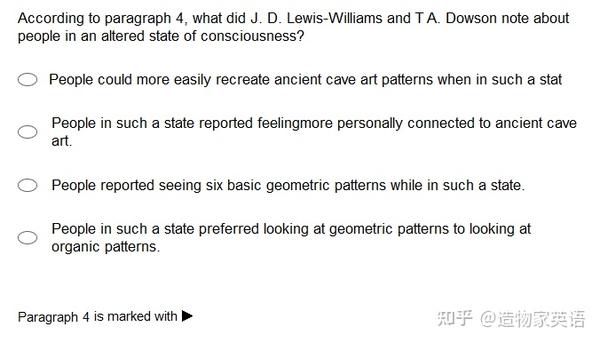
eight.Lewis-Williams and Dowson's approach is cross-cultural-in other words, they surveyed a wide variety of historical and archaeological cultures, finding common images in artwork all over the globe. Lewis-Williams and Dowson point out ethnographic records of shamans (priests) who, in an attempt to communicate with spirits or run across into other worlds, fall into a trance like state past fasting, dancing, hyperventilating, going into isolation in absolute darkness, undergoing sleep deprivation, or even ingesting natural hallucinogens.When these shamans produce an creative representation of what they have seen in their trances, they often include geometric shapes that are also seen in Upper Paleolithic artwork. These images from trances are not culturally controlled but consequence, in role, from the structure of the optic system itself and are therefore universal.Perhaps through sleep deprivation, staring at a flickering fire or the ingestion of drugs, ancient shamans or priests produced these images in their own optic systems. They then translated these images to cavern walls as part of religious rituals.
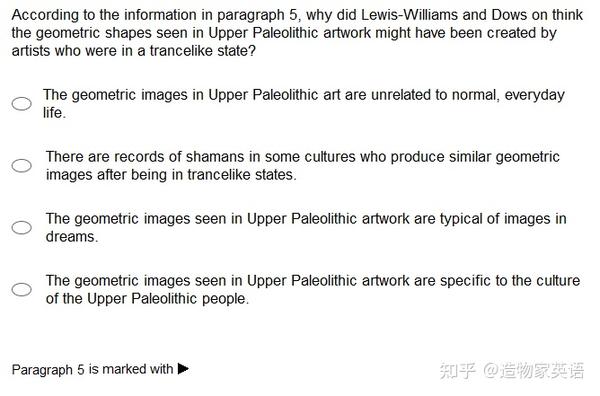
ix.More recently, researchers Patricia Rice and Ann Paterson accept returned to a more economic perspective. Their statistical analysis of the numbers and kinds of animals seen on cavern walls in the European Upper Paleolithic shows interesting correlations with the collections of animal remains constitute at habitation sites in Spain and France. Pocket-size, non-ambitious animals such as reindeer and red deer were important in the diet of the cave painters and seem to have been depicted on cave walls in proportion to their economic importance. ⬛ In addition, animals whose remains are found less oftentimes at archaeological sites, but that were impressive, dangerous, and produced large quantities of meat when they were successfully hunted,were commonly included in the artwork likewise. ⬛ Then it would appear that cavern painters wanted to depict animals that were important nutrient sources. ⬛ However, the relatively recently discovered Chauvet Cavern contradicts this pattern, with its stunning depictions of animals not known to accept been exploited for food past Paleolithic Europeans, including carnivores like lions, bears, and panthers, as well equally woolly rhinoceroses. ⬛

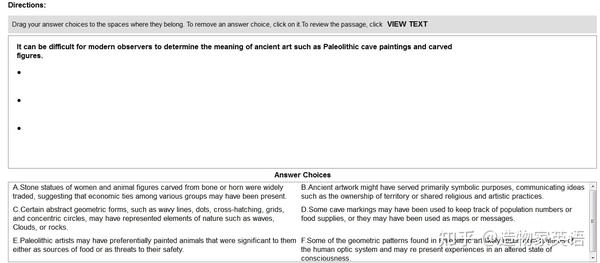
Source: https://zhuanlan.zhihu.com/p/425192038
Posted by: bellofflon.blogspot.com

0 Response to "What Is The Significance Of Animal Painting In Paleolithic Art"
Post a Comment